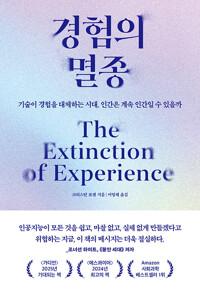책 이미지

책 정보
· 분류 : 국내도서 > 인문학 > 문화/문화이론 > 한국학/한국문화 > 외국인이 본 한국
· ISBN : 9791170360841
· 쪽수 : 320쪽
· 출판일 : 2024-04-05
책 소개
목차
Foreword ........................................................................................................................... 10
Dedicated to Dear Readers in Different Parts of the World ......................................... 14
Introduction The Origin of South Korea ............................................................. 17
The Ancient Korean States and the Path to Modern Prosperity ....... 18
Chapter 1 : The Rise of South Korea ................................................................. 26
1. Increase in Investment ........................................................................ 30
2. Dictatorship with Self-restraint ......................................................... 32
3. The Steps of Modernization ................................................................ 34
4. New Goals .............................................................................................. 38
5. Energy Development in South Korea ................................................ 40
Chapter 2 : Korean Character ................................................................................ 44
1. Want to Get to Know Your Korean Friends Better? ....................... 47
2. Gestures You Should Be Aware of in South Korea ........................ 48
3. Polite Communication Style in Korean ............................................ 52
4. National Peculiarities of Korea .......................................................... 53
5. Development of South Korean Mentality ......................................... 55
6. Korean Table Etiquette ........................................................................ 64
7. Foreigners in South Korea .................................................................. 71
Chapter 3 : History of the Korean Education System ............................ 78
1. First School and University ................................................................. 78
2. History of Education: the First Exams .............................................. 80
3. Craving for Knowledge: New Learning Centers ............................ 80
4. The History of Education of the Modern Period ............................. 82
Chapter 4 : Development of Science in South Korea ............................. 86
1. The Development of Sciences in the Era of the Crust
(10th-14th Centuries) .............................................................................. 87
2. Water Clocks and Other Inventions (15th -16th Centuries) ............ 88
3. Western Influence (17th-18th Centuries) ........................................... 88
4. The development of Science in Korea in the
(19th-20th Centuries) .............................................................................. 89
5. Dr. Hwang Woo-suk's Scientific Achievement ............................... 90
6. Korea and Basic Sciences: Vector of Development ..................... 92
Chapter 5 : South Korean Religion ..................................................................... 98
1. Christianity ............................................................................................. 99
2. Orthodoxy ................................................................................................ 99
3. Catholicism .......................................................................................... 100
4. Protestantism ...................................................................................... 100
5. Buddhism ............................................................................................. 100
6. Branches of Buddhism ...................................................................... 102
7. Shamanism............................................................................................102
8. Confucianism ....................................................................................... 103
9. The Neighborhood of Different Beliefs .......................................... 104
Chapter 6 : Miracles of the South Korean Economy and
Development ......................................................................................... 106
Chapter 7 : Business in South Korea .............................................................. 124
1. How Businesses Operate in South Korea ...................................... 125
2. Features of Doing Business in South Korea ................................. 128
3. Specific Features of Doing Business in the Republic of Korea,
Including Cultural Aspects and Business Customs .................... 130
4. Translation Difficulties ....................................................................... 132
5. Startups ................................................................................................. 134
6. Promising Areas .................................................................................. 136
7. Where Does the Funding Come From? .......................................... 137
8. Acceleration Programs ...................................................................... 140
9. Startup Infrastructure: Hubs and Coworking ............................... 141
10. There are 4 Main Forms of Business in South Korea for Foreign
Busines
ses ........................................................................................... 143
11. Pros and Cons of Doing Business in South Korea ....................... 144
Chapter 8 : Business Etiquette ........................................................................... 148
1. Negotiations ......................................................................................... 150
2. Business Protocol ............................................................................... 154
3. Behaviour During Negotiations ....................................................... 156
4. Restaurants in South Korea ............................................................. 157
5. What to Never Do in South Korea .................................................... 159
6. Greeting ................................................................................................. 160
7. Handshake .......................................................................................... 161
8. Posture .................................................................................................. 162
9. Gestures ................................................................................................ 163
10. Habits .................................................................................................... 164
11. Smoking ................................................................................................ 165
12. Speech ................................................................................................... 165
13. Unspoken Rules of Nonverbal Etiquette ....................................... 166
14. Nonverbal Etiquette and Modernity ................................................ 167
15. Business Contacts .............................................................................. 167
Chapter 9 : The Role of Han and Nunchi in Business .......................... 172
1. The Concept of Han and Its Impact on Decision-Making ........... 173
2. Nunchi in Business Relationships and Communication ............ 176
3. Balancing Tradition with Modern Business Strategies .............. 180
Chapter 10 : South Korean Business Culture ............................................. 184
1. Traditional Art as a Reflection of Values ........................................ 186
2. Cultural Significance in Business Interactions ............................ 188
3. Artistic Inspiration in Marketing and Branding ............................ 189
4. Innovation and Adaptation in Modern Business .......................... 190
Chapter 11 : The Significance of Guanxi in South Korean
Business .................................................................................................. 194
1. The Role of Social Gatherings and Events .................................... 197
Chapter 12 : Drivers of Economic Growth ...................................................... 202
1. New Economic Strategy .................................................................... 203
2. Growth Based on Innovation ............................................................ 205
3. Areas of Strategic Investment .......................................................... 206
4. How Businesses Were Born in South Korea ................................. 208
5. The Childhoods of the Owners of Leading Companies
Worldwide ............................................................................................. 209
6. Businessmen with Individual Control ............................................ 211
7. How Lee Kun-hee Turned Samsung into an Empire of New
Management - Kor
ean Traditions and Western Methods .......... 214
8. The Most Powerful Conglomerate .................................................. 215
9. New Management .............................................................................. 216
10. Bribery and Other Problems ............................................................ 218
11. Change in Leadership ........................................................................ 219
12. South Korea - Skyscrapers ............................................................... 220
13. South Korea - Work and Hierarchy ................................................. 222
Chapter 13 : Crisis Management and Resilience ...................................... 230
1. Strategies for Crisis Management .................................................. 231
2. Navigating Economic Downturns in South Korean Business
Crisis ...................................................................................................... 239
Chapter 14 : Conclusion
How to Build Successful Partnerships with
South Korean Companies? ......................................................... 244
1. Thinking Through Your Business and Covering Every Possible
Detail ...................................................................................................... 245
2. Studying the Legal Formalities ........................................................ 246
3. Criteria for the Success of the Korean Negotiations .................. 253
4. Motivation in the South Korean Management System ................................................................................................... 254
Chapter 15 : Additional Information ................................................................... 270
1. South Korean Climate ........................................................................ 270
2. South Korean Holidays ...................................................................... 274
3. Currency and Financial Information ............................................... 306
4. Customs and Travel Regulations .................................................... 308
Appendices
1. Business Titles and Their Korean Equivalents ............................. 310
2. Chambers of Commerce and Industry in South Korea .............. 311
3. Business Organizations ..................................................................... 312
4. Governmental Bodies ........................................................................ 314
5. References ........................................................................................... 315



































